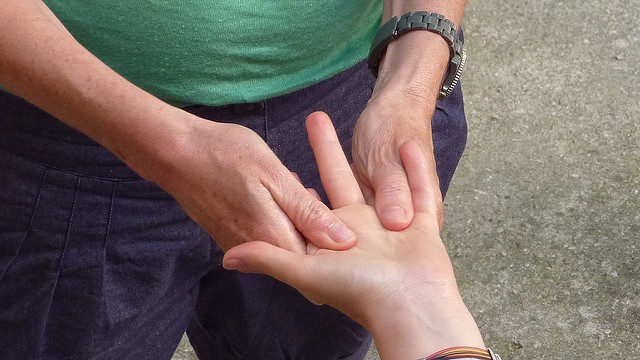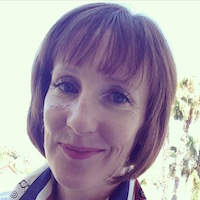I held her head, gently cradling it between my palms as she rested on the massage table.
She was solid bone and warm skin, a breathing human being in my hands. “One day, when everything else hurts, this will be enough” I whispered, turning my face slowly toward her husband. “Children enjoy having their heads cradled, but we don’t often have our heads held lovingly as adults.”
He nodded.
I slowly slid my hands away from her head, silently listening to that subdued sound of skin across linen so familiar to bodyworkers. As a massage therapist, a teacher and a volunteer, this is one interaction of many I experience with patients with a cancer diagnosis and the family members that love them.
I am often asked how I got into oncology massage and what inspired me to start teaching meditation. Before answering, I smile and silently calculate how much of my story the person really wants to hear. The truth: how else does anyone who provides peace and relief to the sick enter into their profession? I grew up in the secretive slow motion horror show that was a 20th century family with a stage four cancer patient. When I was in grade school, biopsy, mastectomy, radiation and chemotherapy took hold of my mother. I was shielded from the many doctor’s visits, but saw their unmistakable effects on my parents. I remember letting myself in with my latchkey after school and spending a lot of time reading quietly in my room.
When I was a child, being quiet was the most valuable thing a child in a family with cancer could do. Back then, doctors believed massage could spread cancer. Back then, stage four cancer was a death sentence, words like metastasis and prosthesis were mentioned only in a whisper and fear and pain made people turn their eyes away.
I grew up and, like many children, grew away from my childhood and tried my hand at a career that interested me. I was forty when I realized I had a secret superpower that was a direct result of my upbringing. I can breathe in that head-underwater-silent-scream-desperation that engulfs a family on the heels of a cancer diagnosis. I can fully behold someone with compassion and listen to their story without the urge to tell them about my friend who had cancer or this research study that found drinking juiced carrots can cure them. I can be there. Listening.
So the universe drew me to the second career I was saving for after my retirement: massage.
As I grew up, so did science. In the 21st century, oncology massage has given many patients with a cancer diagnosis comfort, relaxation and relief from nausea, exhaustion and pain. Professionally trained therapists can now provide a safe full body massage. The good news for families is that, in most instances—and with a few hours of training and a bit of self-confidence— family members can also give safe and relaxing hand, foot and head massage to loved ones with a cancer diagnosis.
Can our touch really bring relief? The answer is yes. As family members of a loved one with cancer, we all have this superpower. Our touch is warm and compassionate, not sterile and clinical like so many cancer treatments. Most importantly, we have their trust.
Our loved one can tell us to stop or adjust pressure without offending us.
The key is to touch with care and compassion. To take a moment to center ourselves and feel our own breath before we reach out. Once we have linked up to our own “compassion superpower,” we can reach out to our loved one. Just start with five minutes. Five minutes to comfort a husband or wife, mother or father who is suffering. Five minutes of breathing and holding and being held. Five minutes of being able to say “I’m here, I see you, I love you,” with our hands and our gentle touch.
As I share these techniques with families facing cancer, I feel like I am holding the hand of my shy, bookish inner child, that girl who couldn’t help her mother.
With my help, little Kathleen is able to teach families how to give comfort to their loved one with a cancer diagnosis.
Author: Kathleen Lisson
Image: Patrick Gaudin at Flickr
Editor: Renée Picard








Read 1 comment and reply